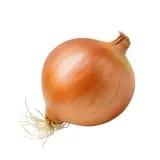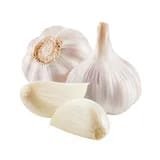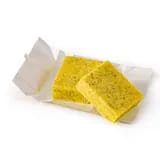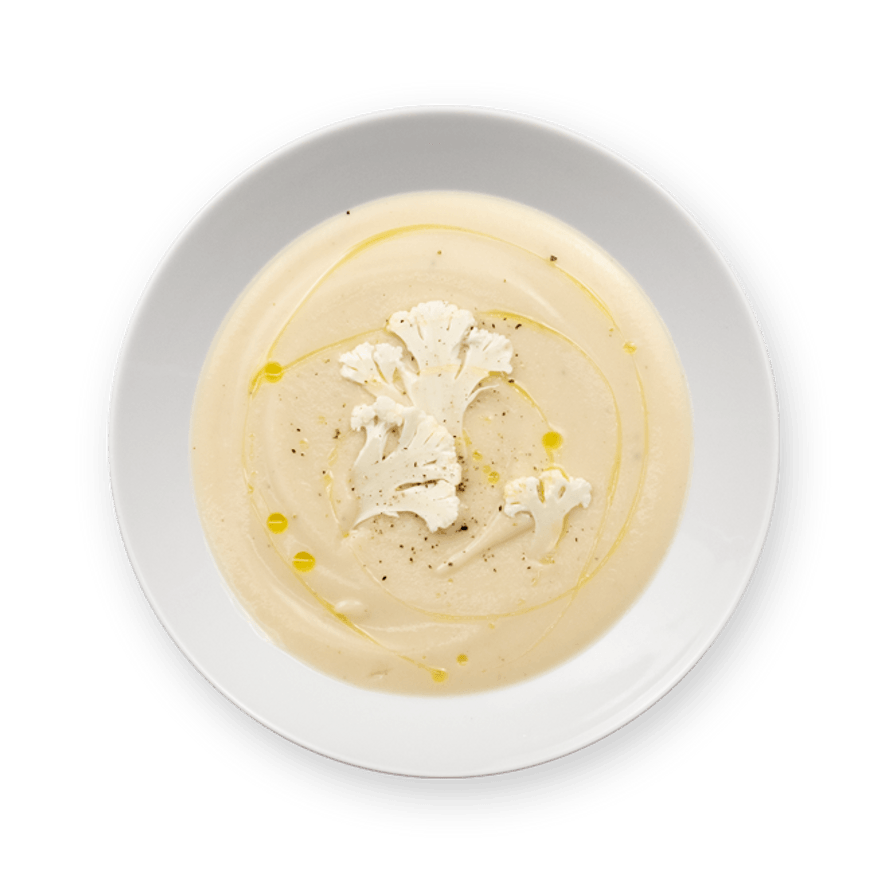Ingredients
Make sure you have...
Utensils
Stovetop, Blender
recipe

Step 1
Wash & slice the cauliflower into florets. Slice the florets in halves or quarters depending on their size. Small dice the cauliflower stems.

Step 2
Peel & mince the onions.

Step 3
Melt a dab of butter in a pot, over high heat. Add the onions & grated garlic. Sauté for 1-2 min, stirring.
Step 4
Reduce the heat to medium & add the cauliflower. Sauté for 5 min, until lightly golden.

Step 5
Add the vegetable stock & 200ml of water per serving. Bring to a boil, then reduce the heat & cover. Leave to simmer for 15 min.

Step 6
Add the grated parmesan & blend until smooth. Add a bit of water, if needed.
Step 7
Serve the creamy cauliflower soup in a bowl*. Re-season to taste & add a bit of cream for an extra decadent touch. Enjoy ! Check out our tips for this step

For a truly flavoursome dish we suggest adding chorizo, bacon bits or sun-dried tomatoes.
- Camille U, Nutritionist
Personal notes
Add your own flavor!
Nutrition facts
Average estimated amount for one serving
| Energy | 130 cal. |
| Fat | 5 g |
| Carbohydrates | 10 g |
| Protein | 8 g |
| Fiber | 7 g |
Values are based on an average estimate for one serving. All nutrition information presented on Jow is intended for informational purposes only. If you have any concerns or questions about your health, please consult with a health-care professional.
On average, one serving of the recipe "Cream of Cauliflower Soup" contains 130 Energy, 5 g of Fat, 10 g of Carbohydrates, 8 g of Protein, 7 g of Fiber.
Price per portion
| € | Nos recettes à -2 € par portion |
| €€ | Nos recettes entre 2 € et 4 € par portion |
| €€€ | Nos recettes à +4 € par portion |
Please note, the price above is dependent on your grocer and the available products in the grocery store you chose.
Scores


A Nutri-score
The Nutri-score is an indicator intended for understanding nutritional information. Recipes or products are classified from A to E according to their food composition to promote (fiber, proteins, fruits, vegetables, legumes, etc.) and foods to limit (energy, saturated fatty acids, sugars, salt, etc.).
A+ Green-score
The Green-score is an indicator representing the environmental impact of food products. The recipes or products are classified from A+ to F. It takes into account several factors on the pollution of air, water, oceans, soil, as well as the impacts on the biosphere. These impacts are studied throughout the product life cycle.
Retrieving reviews...



